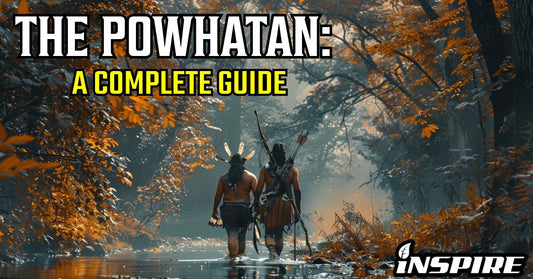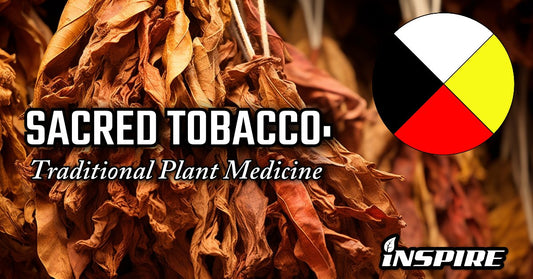Written By: Zach Champ,
Connect with me on LinkedIn!
WHAT IS TAROTMANCY? WHAT ARE TAROT CARDS?
You may have seen the mysterious and enchanting Tarot before. This may have been in a movie or real life. Most people are familiar with the idea that Tarot is used for fortune-telling, and often associate Tarot as just another gimmick employed by downtown psychics to get your money. Yet what is the real story behind these cards, and just how old is this tradition?
The truth is that the Tarot goes back a few centuries. The oldest Tarot cards originally come from 15th century Italy, where it was a medieval Renaissance playing card game. These cards were made on sheets of parchment, ivory, and cloth that were gilded and featured hand-drawn designs. The game of Tarot was a popular and widespread activity throughout Renaissance Europe but was not originally associated with the occult. The famous Medici family of Italy, which ruled during much of this time, were especially active in the production of these early card decks.
Can Tarot Cards Actually Predict the Future?
Tarot Decks later found widespread popularity throughout Europe as an occult practice and curiosity during the Romantic Period where interests among the aristocracy in the occult and esoteric were widespread. It’s during this time that the Tarot as an occult practice truly began. Tarot is a form of cartomancy, meaning it is a divinatory system that employs the use of specialized marked cards.
A typical Tarot deck will consist of approximately 78 cards. The tarot deck is broken into two categories- the Major Arcana and the Minor Arcana. The Major Arcana consists of 22 cards each based on certain symbolic themes or motifs. The Minor Arcana, on the other hand, has a total of 56 cards divided into four suits with both number and face cards. All the cards in a Tarot deck have their own unique traditional meanings and connotations which are deciphered and interpreted as a part of the fortune-telling process. Tarot cards will often contain alchemical, astrological, Judeo-Christian, and pagan symbolism in their designs, making it a distinctively Western occult tool and practice.
HOW DO YOU USE TAROT CARDS?
Divination: Tarot Cards are used for Divination. What is Divination? Divination is any series of ritualistic exercises that help the participants discern pertinent information about their lives and their futures from the chance interpretation of signs and symbols with predefined meanings. All cultures around the world feature divinatory practices as part of their spiritual and religious traditions. Other forms of divination that are common include scrying with a crystal ball, astrology, numerology, and even using and reading the tea leaves found in saucer cups. Some people even use religious texts like the Bible or Quran and use random passages from those texts to interpret the significance of events and signs. All of these methods are considered divinatory techniques.
Types of Spreads: When using Tarot cards for Divinatory purposes, you will need to shuffle the deck of cards thoroughly, and then arrange the cards into a spread. A spread is a pattern in which the Tarot cards are laid and read. There are many different types of spreads available, all with their own unique purpose and significance. Three of the most common spreads you will see in Tarot readings include:
- Celtic Cross: The Celtic Cross is a textbook tarot spread that is commonly used by psychics and fortune-tellers. It is a 10 card spread consisting of two distinct sections- a circle, and a staff. The Celtic Cross is based on the familiar symbol of the same name commonly found in Irish mythology, religion, and folklore. All the cards are laid out in sequential order, one-by-one, face-down until they are ready to be read. Each card is read one at a time by flipping it over to reveal which card it is. Each of the 10 cards represents the following aspects to be read in the fortune:
- Basic 3 Card Spread: The basic 3 card spread is another super common, and super-easy spread for fortune-telling. It is perhaps one of the easiest go-to spreads for quick, simple, yet powerfully concise readings. With the 3 card spread you simply shuffle your deck and organize 3 cards side-by-side, face-down. The cards are then read from left to right in sequential order. The cards are read so that from left to right you are interpreting THE PAST, THE PRESENT, and THE FUTURE with the left-hand card representing the past, the middle card representing the present, and the right-hand card representing the future!
- Astrological/Zodiac Spreads: Although not as common as the Celtic Cross or the standard 3 card spread, you may occasionally encounter Astrological or Zodiac based spreads. The idea with these spreads is that you are arranging cards to correlate with specific astrological influences in an effort to add an extra layer of divinatory symbolism and meaning to your fortune-telling. This can result in additional and expanded insight with one’s readings! Astrological/Zodiac spreads are more difficult, but learning how to work with these spreads can be worth the reward. Astrological spreads can vary in form, but usually, are 12 card spreads with each card position representing a Zodiacal sign.
WHAT DOES A TAROT CARD DECK LOOK LIKE?
Major Arcana: In the typical Tarot deck there are 22 cards that make up the Major Arcana. Each card in the Major Arcana represents an archetypal character or symbol from the medieval world.
All the symbolism associated with the Tarot is based on the Judeo-Christian religious tradition.
It is typically understood that the cards of the Major Arcana in their specific order represent a journey of individual enlightenment with the first card, the Fool, signifying the archetypal beginning and end of this cumulative experience. It is typically understood that when reading from cards in the Major Arcana, the insights gained will apply to life in broad and generalized ways.
Minor Arcana: The Minor Arcana consists of 56 cards divided into four suits. Usually, the suits are swords, batons, cups, and coins, but variations exist, including wands, pentacles, and others. These suits are in contrast with those found in playing cards such as hearts, clubs, diamonds, and spades. Each of the suits has alchemical and astrological meanings associated with them. When reading cards from the Minor Arcana, the insights typically help one understand the subtle influences on our day-to-day experiences.
WHAT TYPE OF TAROT DECKS EXIST?
Tarot of Marseilles: The Tarot of Marseilles decks is one of the most common Tarot decks available, as well as one of the oldest available. Many of the themes and symbolism of this deck are copied in subsequent decks, making the Tarot of Marseilles a standard in Tarotmancy. This particular deck is believed to have originated in Northern Italy during the 15th century before being spread to France and then other parts of Europe.
The Tarot of Marseilles decks contains a total of 78 cards split into two different categories. In one category are your standard cards divided into 4 suits consisting of Batons, Swords, Cups, and Coins. Each suite has 4 face cards which include a Page, Knight, Queen, and King. The other 22 cards are Trump cards that contain various themes such as STRENGTH, JUSTICE, and DEATH. These Trump cards are synonymous with the Major Arcana of modern decks.
Rider-Waite: The Rider-Waite Tarot Deck was originally published in 1910 and features art and illustrations by the artist, clairvoyant, and poet Pamela Coleman Smith.
Smith created the designs with insight and instructions from the famous 20th-century mystic and writer Arthur Edward Waite. Both Smith and Waite were members of the Hermetic Order of the Golden Dawn and had previous experience and knowledge with the occult. Once completed, the cards were published by the Rider company. When Smith did many of the illustrations, she based the designs on the older art from Tarot cards on display in museums in London, helping create a continued lineage and tradition from the decks of antiquity to the more modern 20th-century decks.
Even though there were similarities, the premiere of the Rider-Waite deck introduced new patterns that deviated from the earlier Christian iconography and themes of earlier Tarot decks towards more pagan and esoteric subjects.
Thoth: The Thoth Tarot deck was invented by the infamous occultist Aleister Crowley and was designed to be a new Tarot deck that would upend and reclassify the traditional motifs and themes found within older Tarot decks. As a result, many of the Trumps used in the Thoth deck are different from those found in the Rider-Waite decks and earlier Tarot of Marseilles variations.
WHERE CAN I LEARN MORE ABOUT TAROT?
There is no shortage of the number of websites and articles available online about the Tarot. Tarot has gained widespread popularity recently as part of the spread of New Age stores and content online. There are so many websites, YouTube channels, and online shops it can be hard to know which resource is the most knowledgeable!
We here at American Gypsy Herbalist gathered some of our favorite online resources for Tarot and have listed them here so you know who you can trust!
Most of these resources are great for helping beginners get involved in learning Tarot and starting their own readings. We also listed a few links to articles on the Tarot that would be interesting to our more experienced and advanced practitioners.
If you enjoy these articles and videos, then make sure you show your support by liking and following these groups on their social media!
FURTHER READING:
https://www.salemtarot.com/tarothistory.html
https://www.metmuseum.org/blogs/in-season/2016/tarot
https://tarotavenue.com/zodiac/







